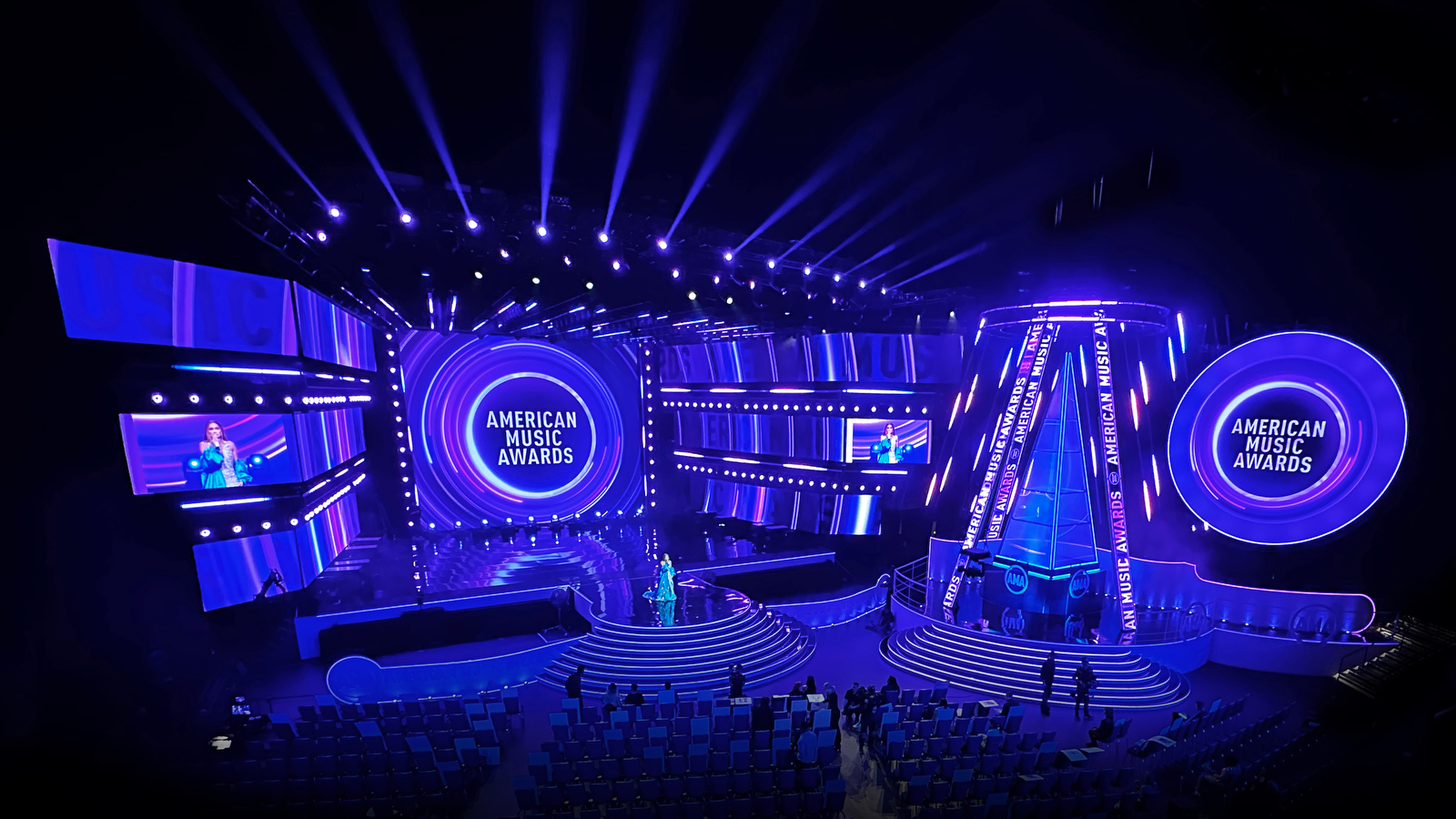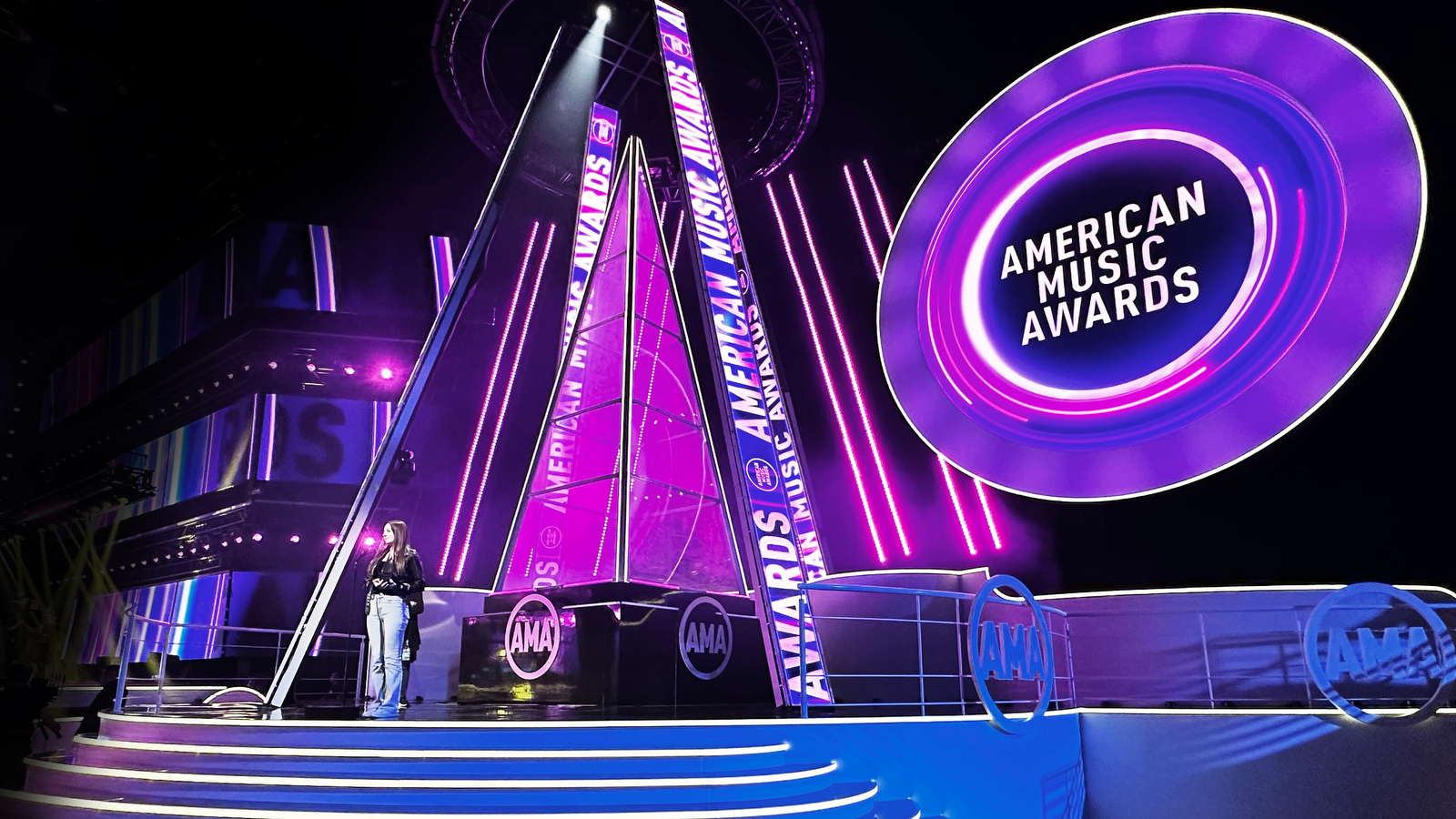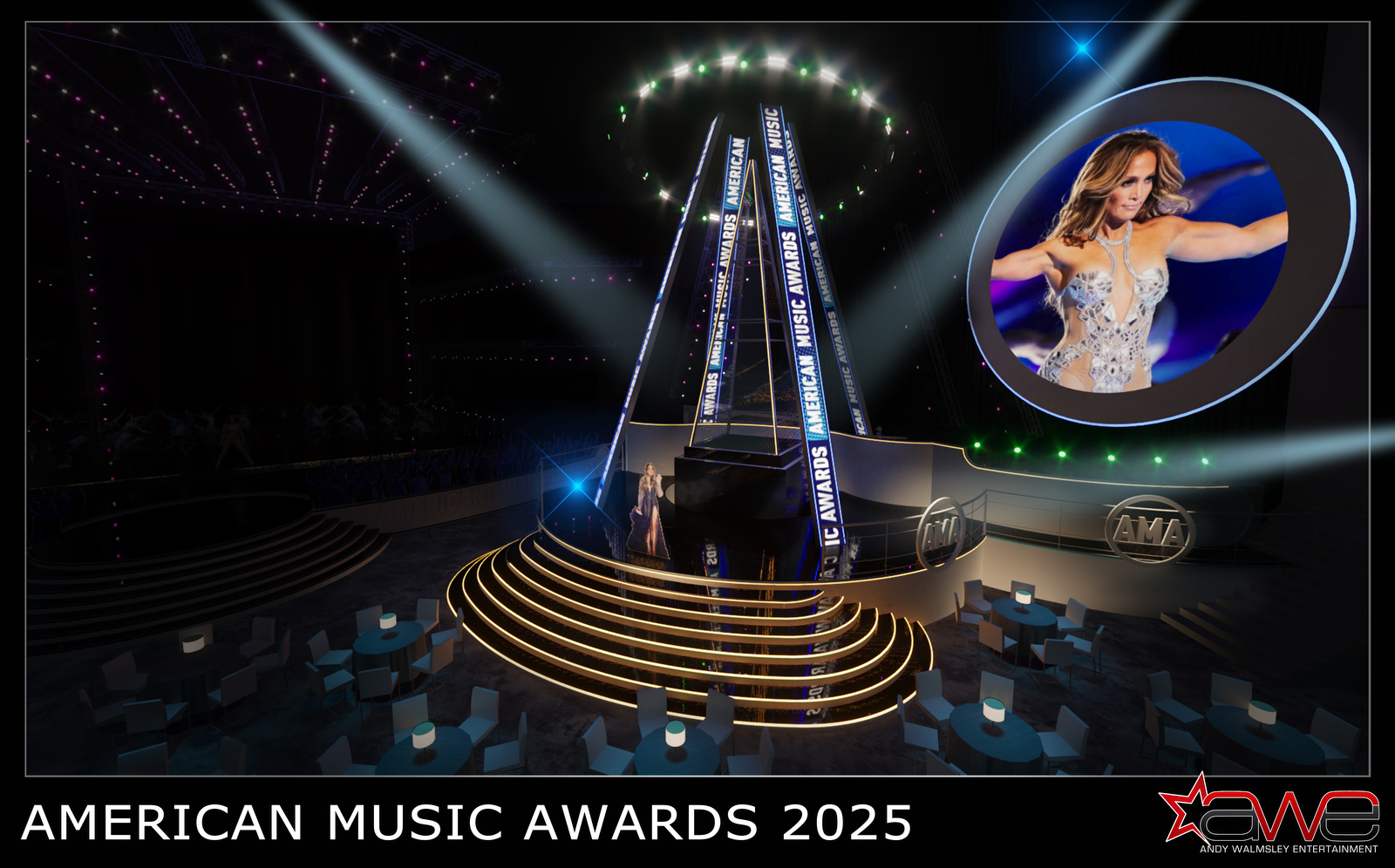Creative adaptation transforms American Music Awards stage design

Subscribe to NCS for the latest news, project case studies and product announcements in broadcast technology, creative design and engineering delivered to your inbox.
When production designer Andy Walmsley began working on the 2025 American Music Awards five months before air date, he was designing for an arena. That plan evolved when producers moved the live broadcast to the Fontainebleau Hotel Theater in Las Vegas, creating an opportunity to reimagine the stage design for the Memorial Day show.
“I was pretty much complete with the design process about to start drafting when the venue completely changed,” Walmsley noted in an interview with NCS.
The shift from arena to theater required innovative solutions to accommodate 11 diverse musical performances within the theater’s unique configuration.
The design brief demanded what Walmsley describes as an “ultra flexible performance stage area” capable of transforming seamlessly between intimate solo performances and large-scale productions featuring rock bands, backup dancers and special effects. The staging needed to serve dual functions: a main performance area for musical acts and a separate acceptance stage for award presentations that could operate simultaneously during performance changeovers.
“Sometimes it’s one person singing an intimate ballad and in other cases it’s a rock band with all the musical equipment that comes with that and there’s always some bombastic performances with dozens of backup dancers, pyro, smoke, special effects,” Walmsley explained. The contemporary aesthetic requirement reflect
Innovative solutions for venue-specific design
The Fontainebleau Theater’s intimate setting demanded creative problem-solving for both scenic and technical requirements. Walmsley’s design solution centered on rapid-strike staging that could accommodate the show’s demanding performance schedule while maintaining visual impact for television audiences.


The stage architecture incorporated modular elements that could be quickly reconfigured between performances.
Each of the 11 acts required different configurations, with some performances using up to five band carts and 20 floor lights that needed precise positioning and rapid removal. The design team developed a systematic approach to equipment placement that maximized the limited backstage storage while ensuring smooth transitions during the live broadcast.
To accommodate over 70 band carts, props, scenic pieces, floor lights and special effects equipment, Walmsley repositioned the upstage boundary 16 feet downstage to create adequate backstage storage while extending the stage front into the audience area to preserve performance space for dance acts. This configuration maintained the visual scale necessary for television while addressing the venue’s constraints.
The theater’s second-floor location with a single 10-foot by 20-foot freight elevator became integral to the staging strategy. The production team developed precise timing protocols for equipment moves during the live broadcast, with elevator company engineers on-site to ensure continuous operation throughout the show.
“We had engineers from the elevator company riding in the elevators up and down during show just in case of a mechanical failure,” Walmsley said, highlighting the comprehensive approach to live broadcast logistics.
Collaborative artist partnerships drive creative results
The design process fostered extensive collaboration with artist teams through virtual meetings with creative directors, management, record labels and performers. This iterative approach allowed for customized staging that reflected each artist’s vision while working within production parameters.
Gwen Stefani’s performance exemplified this collaborative success. Her team’s vision included a field of wheat, glittered stage surfaces, candy hand props and a Vegas-style lightbulb staircase backed by a sunburst scenic piece.


Green Set fabricated the wheat elements, while custom-glittered linoleum created the specialized stage surface.
“Her aesthetic is always fun, very Pop Art,” Walmsley said. “She was very happy and told me it looked so pretty, so that’s always satisfying when the person at the top of the entourage is really happy with my work.”
Walmsley’s design workflow integrates SketchUp modeling with Unreal Engine renderings and virtual flythroughs.
Art director Patrick Adair handled technical drafting while assistant art director Chris Goumas managed logistics coordination. The comprehensive design scope encompassed the complete 120-foot red carpet installation, including walls, scenery, step-and-repeat backgrounds, sponsor branding and LED screens.


“There’s hundreds of people working for months and millions of dollars being spent and 5 months of stress all leading to a live 2 hour TV show and not only did it go without a hitch but it looked pretty impressive,” Walmsley said, reflecting on the successful execution of the complex production.
The Memorial Day broadcast aired on CBS and streamed on Paramount+ in the U.S., with global distribution across linear and digital platforms. The show honored popular songs and artists while paying tribute to military personnel during the Memorial Day weekend broadcast.
Project Credits
- Production Design: Andy Walmsley
- Art Director: Patrick Adair
- Assistant Art Director: Chris Goumas
- Lighting Director: Tom Sutherland
- Video Content: Michael Zinman
- Scenic Fabrication: Center Line Scenery, Goodnight and Co, Blue Line
- Stage Rigging: Michael Stokely, Kish Rigging
Subscribe to NCS for the latest news, project case studies and product announcements in broadcast technology, creative design and engineering delivered to your inbox.





tags
American Music Awards, Andy Walmsley, Award Show, Awards Shows, Blue Line, CBS, Center Line Scenery, Chris Goumas, Goodnight & Co., las vegas, live events, Michael Zinman, Patrick Adair, stage design, Tom Sutherland
categories
Awards Shows Production Design, Heroes, Live Event Set Design, Set Design